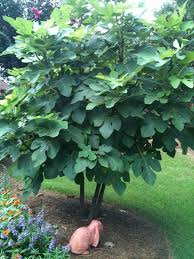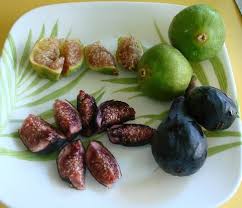At the nursery, we’re always busy. In the spring, it’s a whirlwind of customers and plants coming in and going out. When the weather slows down the sales, we’re still working away getting ready for next year. We play catch up with the office work. We deep clean. We reorganize and redo displays for a fall and winter holiday look. We get our reference materials ready for next spring.
Sometimes the cleaning, reorganizing, and prepping for next year yields some strange and nostalgic items. It’s kind of like a cross between a treasure hunt prize and Throw Back Thursday social media posts. I’d like to share the latest “find”.
First, a brief background. I’m a hoarder and my sister is a “throw awayer” (if there is such a term). I have recipes from when I was 16 and clothes that are over 30 years old. About the time I get rid of something, it comes back into fashion or I want to reference it and I can’t find it, usually because I have thrown it away.
So today, my sister Erica brought me an old, type-written page about figs. This page, encased in a plastic sleeve, has resided in our fruit tree book for as long as I can remember. I recognized it immediately. Her comment and question surprised me, however. She referred to the very last paragraph of the written page which begins “Biblical records mention the fig leaf…” Her question was, “Who do you think wrote this?” Now, I don’t know for sure but I have a very strong suspicion, given the biblical reference that it was our grandmother, Garland, who wrote this epistle about figs. It sounds more like her than my mom. I doubt my dad spent his time typing up stuff like this. It could be a plagarized article used for sales purposes or it could be someone else who worked at the nursery way back, but my money’s on my grandmother.
Then, Erica turned the page over. There were 3 recipes on the second page. She suggested I blog about it and include the recipes. The strangest thing of all is, one of the recipes looked very familiar. In fact, I’m pretty sure I made that recipe 25 or so years ago. If my memory is still intact, I found a copy of some fig recipes in a file folder of hand-outs. We had an abundance of figs on the trees in the backyard of the old homestead (Erica’s house now) that were not being eaten or preserved.
I decided to make something I could can. The recipe calls for dark rum. I was a teetotaler then, so I used rum extract. The fig and walnut conserve was delicious! I served it over ice cream and I can practically taste it even now.  I’m not sure I ended up canning any of it. I really wanted to prove to myself that this was in fact the same recipe. As I said earlier, I keep everything. Wouldn’t you know it, I couldn’t find a copy in my recipe file and stash. (Okay, I didn’t look that deeply. I have too much to do to spend 30 minutes trying to find a recipe I made 25 plus years ago.) Oh well, I’m 97% sure it’s the same one. I’m going with that. No one can prove otherwise, anyway.
I’m not sure I ended up canning any of it. I really wanted to prove to myself that this was in fact the same recipe. As I said earlier, I keep everything. Wouldn’t you know it, I couldn’t find a copy in my recipe file and stash. (Okay, I didn’t look that deeply. I have too much to do to spend 30 minutes trying to find a recipe I made 25 plus years ago.) Oh well, I’m 97% sure it’s the same one. I’m going with that. No one can prove otherwise, anyway.
In honor of the unknown author (possibly Garland) of this history of figs, here is the text, followed by the recipe. I have transcribed it exactly as it was typed, errors and all. Enjoy!
Fig trees have been growing in the Northwest since 1886, mostly for shade or an ornament. Little or no effort was made to distribute the fig in many localities in which the fig is adapted or try to learn which variety might be best suited to home use or orchard planting.
In about 1908, we took up the task where others had left off and since we have found that after growing many varieties, very few were suitable to the Northwest. The variety must be hardy, self pollenizing, stand an unlimited amount of dampness and still ripen its fruit. Any fig will grow here and make a fine ornamental tree, but to produce the finest fruit work had to be done. The fig, a unique fruit in that it contains no acid, can, be eaten in quantities not permissable by other fruits. It is rich in minerals, especially sodium chloride, a blood element, and it also contains, when fully ripe, about 42% sugar and about 3.5% protein, and it is most valuable as a dried fruit.
The fig tree lives longer, bears a crop of figs each for a continuous period of over six weeks, and requires no spraying, little trimming, or care of any kind after the fifth year, except for watering and a little fertilizer. The fig leaves are sometimes used as poultices for the relief of rheumatism, for mellowing tobacco and the leaves contain a milky sap.
Biblical records mention the fig leaf as clothing and as medicine. In the matter of clothing, were it “the fashion to wear em” the fig leaf would be particularly enhanced in value, a fact due to the infinite number of patterns no two leaves found on the same tree being exactly alike, thus featuring “exclusive designs.”
Fig and Walnut Conserve
In a heavy saucepan combine 3 cups sugar, 1 cup water and 1 tablespoon grated lemon rind. Bring the water to a simmer over low heat washing down any sugar crystals clinging to the sides of the pan until the sugar is dissolved. Cook the syrup 5 min. Add 2 pounds figs, halved lengthwise and sliced, 1/4 lemon slivered, and cook the conserve over low heat, stirring occasionally for 20 minutes. Let the conserve stand for at least 12 hours.
Bring to simmer over moderate heat and cook for 20 minutes, until thick. Stir in 1 1/3 cups chopped walnuts and 1/2 cup dark rum. Ladle into hot sterilized jars and cap. Let cool and tighten caps. Yield: 2 1/2 pints.
Canning Figs
One pound of ripe figs to 1 pound of sugar. Make a heavy syrup with the sugar, pour over the figs after they have been dipped in boiling salt brine for 2 minutes. Now put figs in jars to simmer on stove till clear or transparent.
Brine is made with 2 ounces of table salt to 1 gallon water. Bring to boiling point before dipping the figs. Seal teh jars while the figs are hot.
White Fig Marmalade is made from the white or black fig. Use perfectly ripe, fresh fruit, peel off the thin, soft skin or leave it on, grind up the figs through your food grinder. To every 2 pounds of figs use 1 1/2 pounds of sugar. If you like a touch of other flavor add a little grated orange or lemon peel.
is made from the white or black fig. Use perfectly ripe, fresh fruit, peel off the thin, soft skin or leave it on, grind up the figs through your food grinder. To every 2 pounds of figs use 1 1/2 pounds of sugar. If you like a touch of other flavor add a little grated orange or lemon peel.
Boil all together until it is reduced to a thick, clear, smooth mass. Do not stir too much, as this will cause the marmalade to sugar sooner after being made. When done put into jars while hot and cover closely. Those who like less sugar can use 1/2 pound to 1 pound of figs, and it will keep perfectly if it is boiled till very clear and smooth.


Wonderful article on Grandma Garland’s Fig Notes. Thank you for sharing. I am going to use this recipe. I do make Drunken Fig Jam and this seems similar.
They are probably the same recipe. Glad you enjoyed the blog.